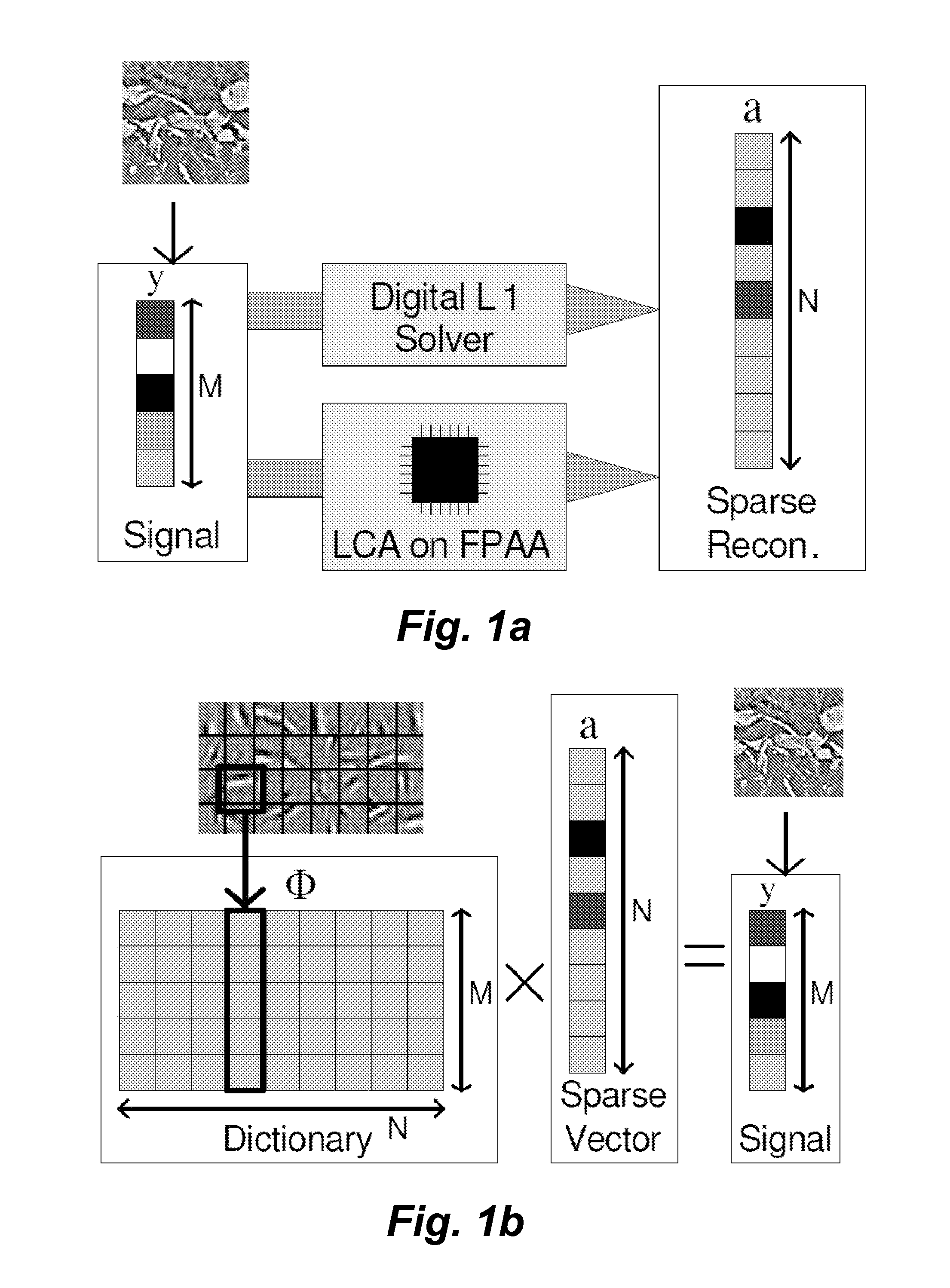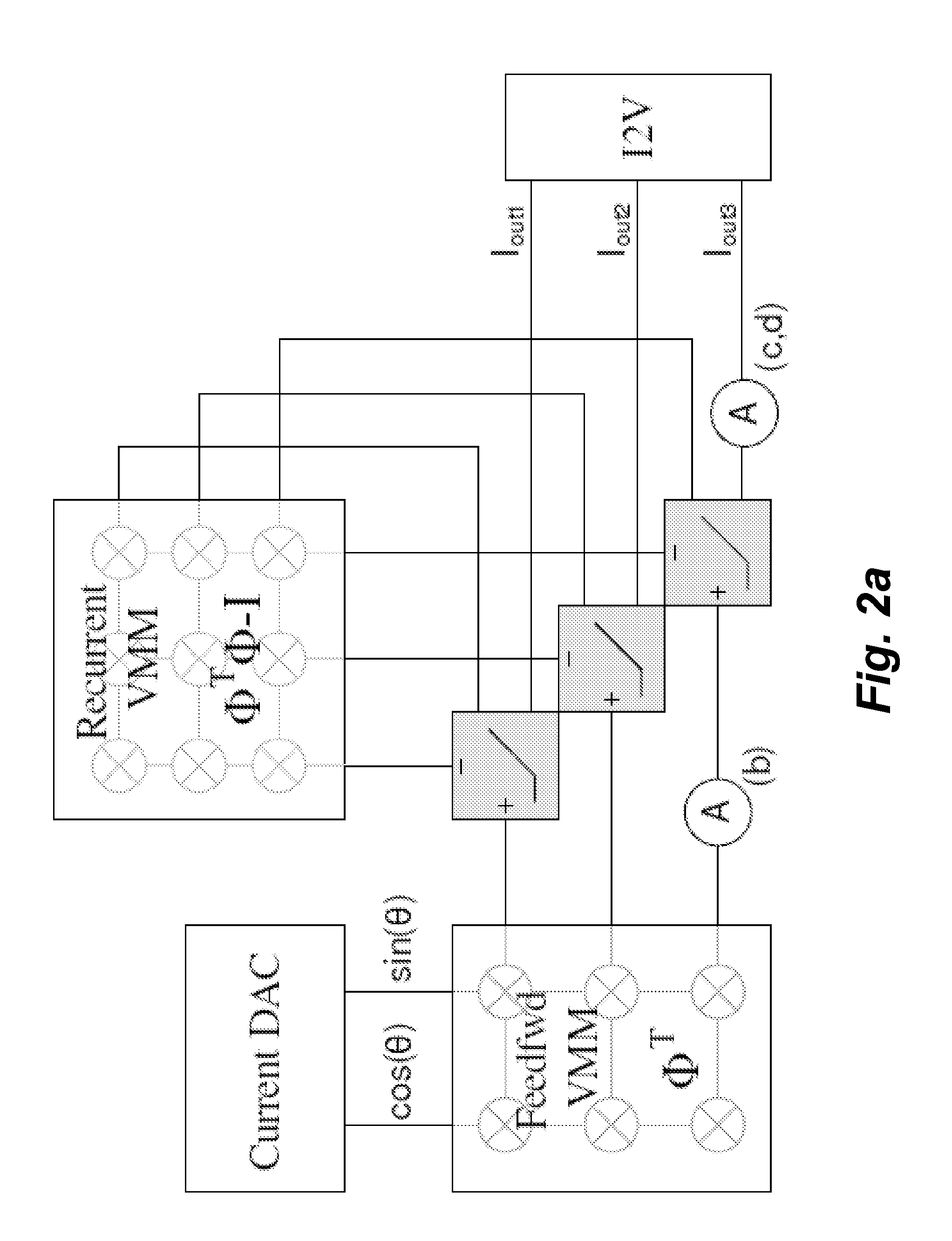Analog programmable sparse approximation system
an approximation system and analog program technology, applied in the field of analog programmable sparse approximation system, can solve the problems of preventing the practical deployment of digital solutions for portable, low-power applications, reducing the solution time, and reducing the cost of optimizing the signal recovery process. energy consumption and computational cost reduction
- Summary
- Abstract
- Description
- Claims
- Application Information
AI Technical Summary
Benefits of technology
Problems solved by technology
Method used
Image
Examples
example 1
LCA Circuitry on Reconfigurable Analog Hardware
[0073]As shown in FIG. 5, in some embodiments, a reconfigurable analog signal processor (RASP) 2.9 v can be used. In this case, a 350 nm double-poly CMOS chip can be used. The chip can further comprise, for example and not limitation, several computational analog blocks (CABs), a large matrix of programmable floating gate elements (FGEs) for routing, and a plurality of (in this case, 26) chip spanning volatile switch lines. These switch lines enable rapid scanning of every internal node in the chip. The CABs can comprise a variety of analog elements including, but not limited to, the OTAs and nFETs used in the LCA. The chip can also comprise a plurality of CABs (in this case, 18) dedicated for current-mode digital to analog conversion (DACs). This configuration enables the system inputs to be quickly reprogrammed.
[0074]In some embodiments, the RASP 2.9 v can comprise several design innovations that make it particularly well suited for i...
example 2
[0126]To test the configuration described above, a network of 18 neurons, with 12 driving inputs, can be implemented on the RASP 2.9 v. This network enables the solution of BPDN for arbitrary 12×18 dictionaries of non-negative elements.
[0127]In addition to the components discussed above, an on-chip 8-bit current DACs can be used to inject vectors of currents onto the chip. See, FIG. 14a. As shown in FIG. 14b, in this case, the input vectors were created via the assumed generative model for sparse signals: a basis set of fixed sparsity (k=1−4) was multiplied by the dictionary Φ. The use of feedforward VMM to generate these results was not used. Instead, the feedforward multiplication was performed digitally and then directly applied to the neurons via the current DACs. The threshold current, Iλ, was implemented at multiple values 2.5 nA and 5 nA, illustrating the tradeoff between accurate reconstruction (i.e., low Iλ) and better enforced sparsity (i.e., high Iλ).
[0128]Many of the nod...
PUM
 Login to View More
Login to View More Abstract
Description
Claims
Application Information
 Login to View More
Login to View More - R&D
- Intellectual Property
- Life Sciences
- Materials
- Tech Scout
- Unparalleled Data Quality
- Higher Quality Content
- 60% Fewer Hallucinations
Browse by: Latest US Patents, China's latest patents, Technical Efficacy Thesaurus, Application Domain, Technology Topic, Popular Technical Reports.
© 2025 PatSnap. All rights reserved.Legal|Privacy policy|Modern Slavery Act Transparency Statement|Sitemap|About US| Contact US: help@patsnap.com



